Tracking Pamela Anderson’s Style Evolution From Bombshell to Barefaced
A story of more than just a sartorial reinvention


Pamela Anderson has always known how to command attention. In the '90s, her image was impossible to escape—plastered across billboards, TVs, and the collective imagination of a generation. The iconic Baywatch red one-piece, tousled blonde hair (earlier this week, I was reminded that people are still asking for ‘The Pamela’ in salons, just as they are ‘The Rachel’), sky-high heels, heavy kohl eyeliner, and whisper-thin eyebrows became part of a visual language that defined a decade of sex symbols. In many ways, it still does. But as with all trends, what once read as hyper-feminine, kittenish, even aspirational, has taken on more complex meanings. The public, and Pamela herself, have since interrogated the gaze that built and defined her.
Now, in her 50s, Pamela Anderson has done something radical once again. In a media culture still eerily obsessed with youth and polish, she’s stripped it all away.
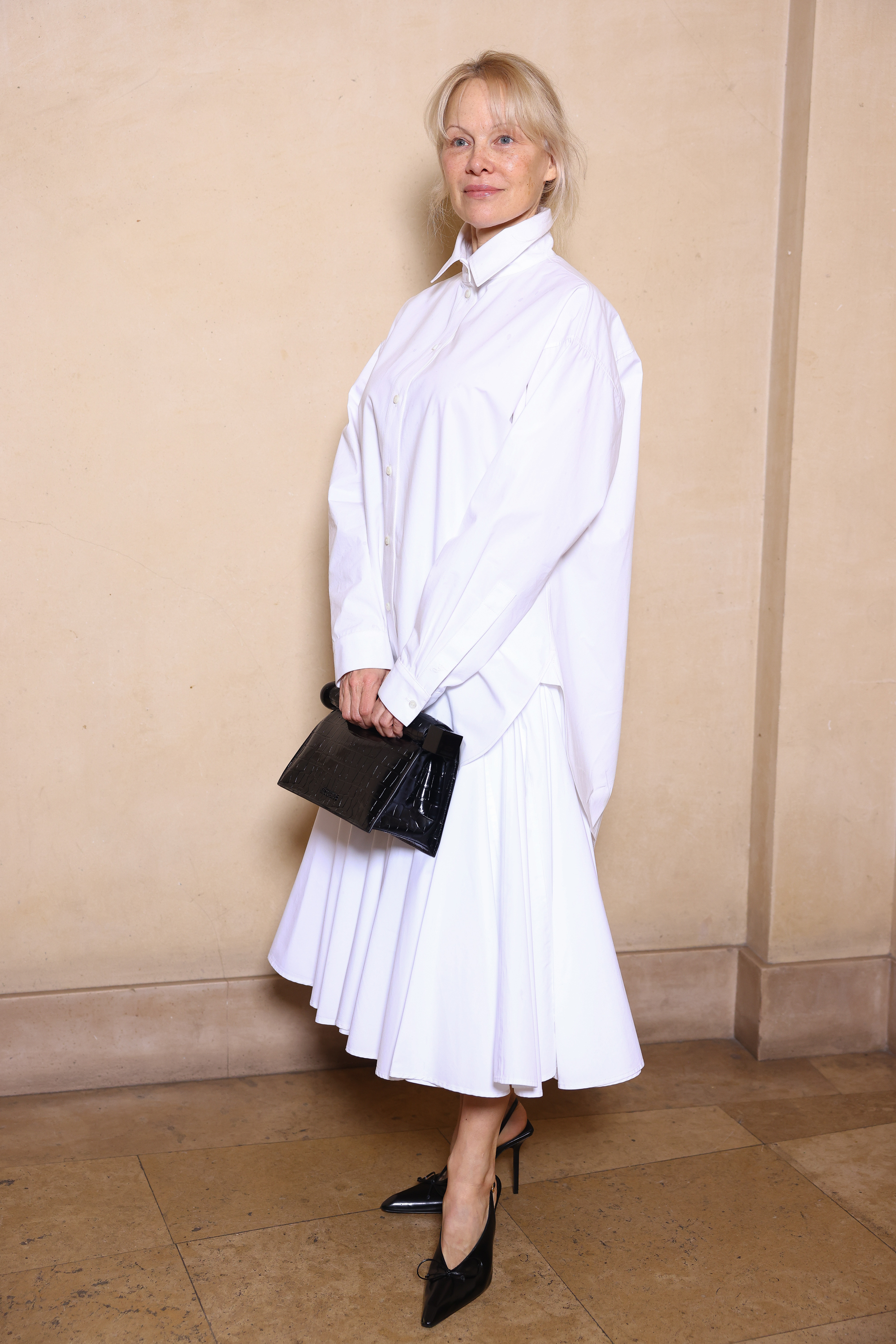
Pamela Anderson attends the Jacquemus Menswear Fall-Winter 2025/2026 show at Paris Fashion Week
To understand how revolutionary this shift has been, we need to first look back. Pamela Anderson’s early style was a masterclass in what the male gaze deemed desirable: micro-minis, plunging necklines, latex, plenty of animal print. She was, in many ways, performing femininity to its fullest extent.
But what’s often overlooked is that Pamela was never just the object, she was also the orchestrator. As another famous buxom blonde once said, “It costs me a lot of money to look this cheap.” Like Dolly Parton, Anderson played to the stereotype that was always going to be levied at her. She understood the performance—and its power.
Pamela Anderson in the 1990s
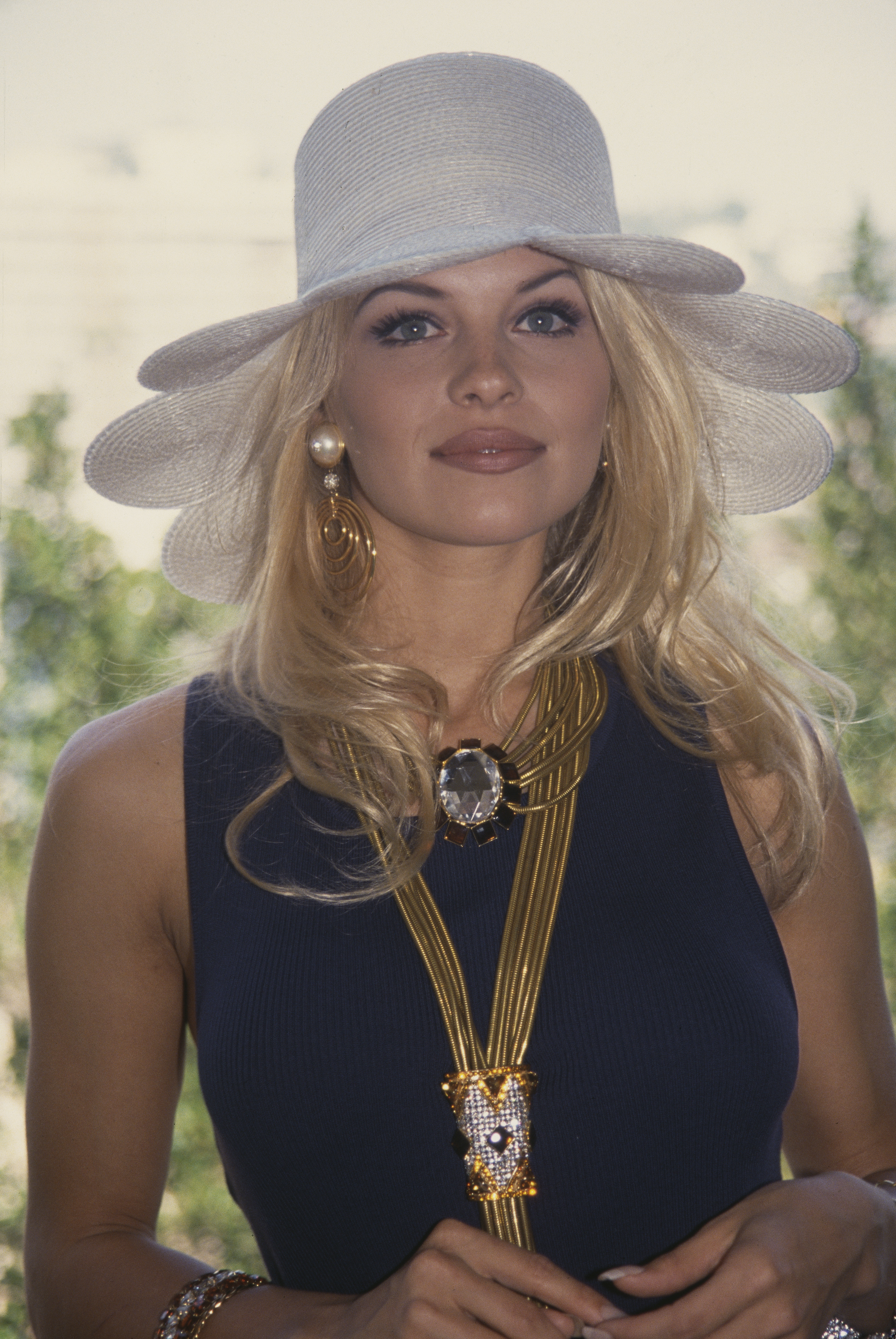
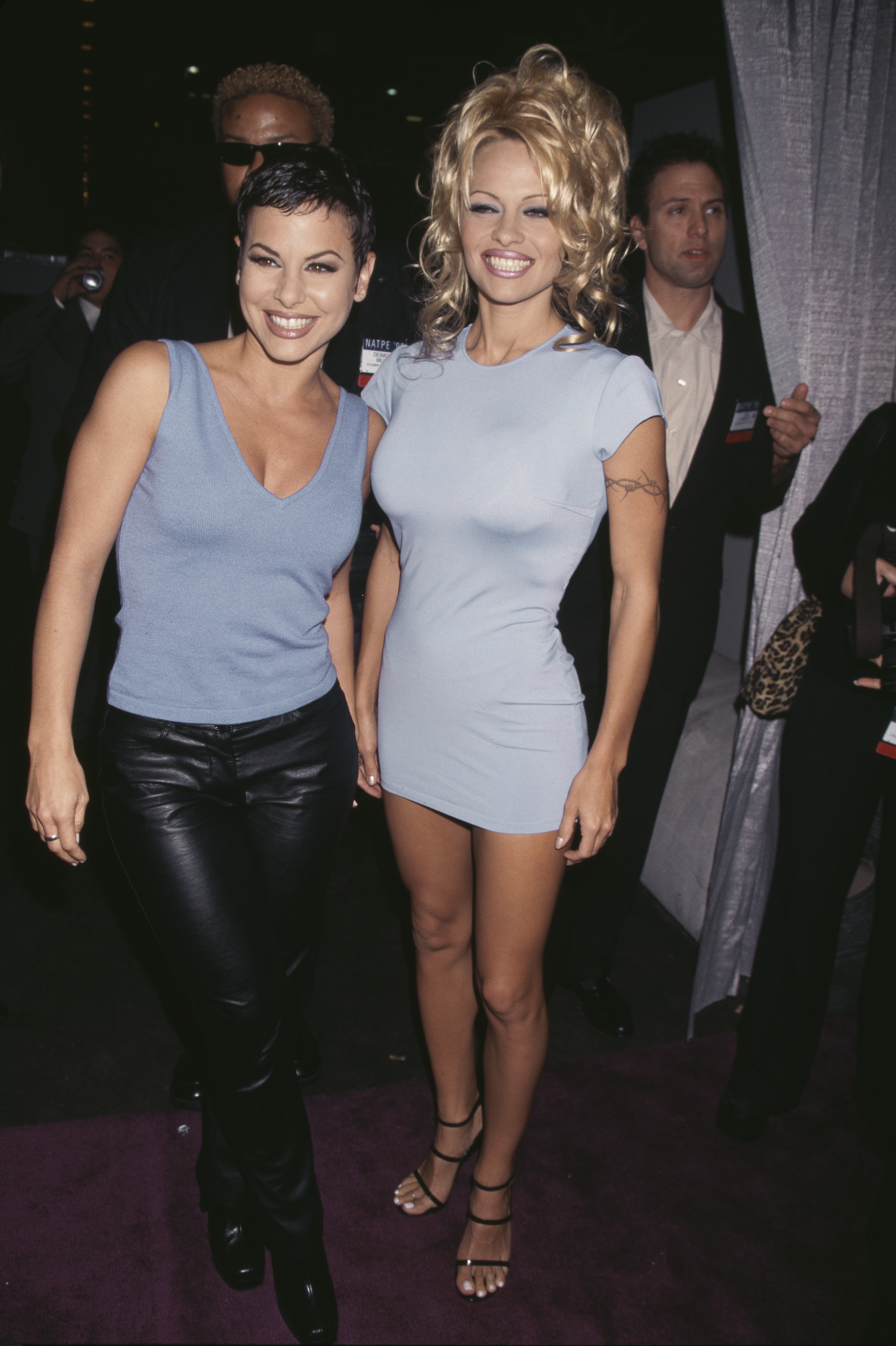

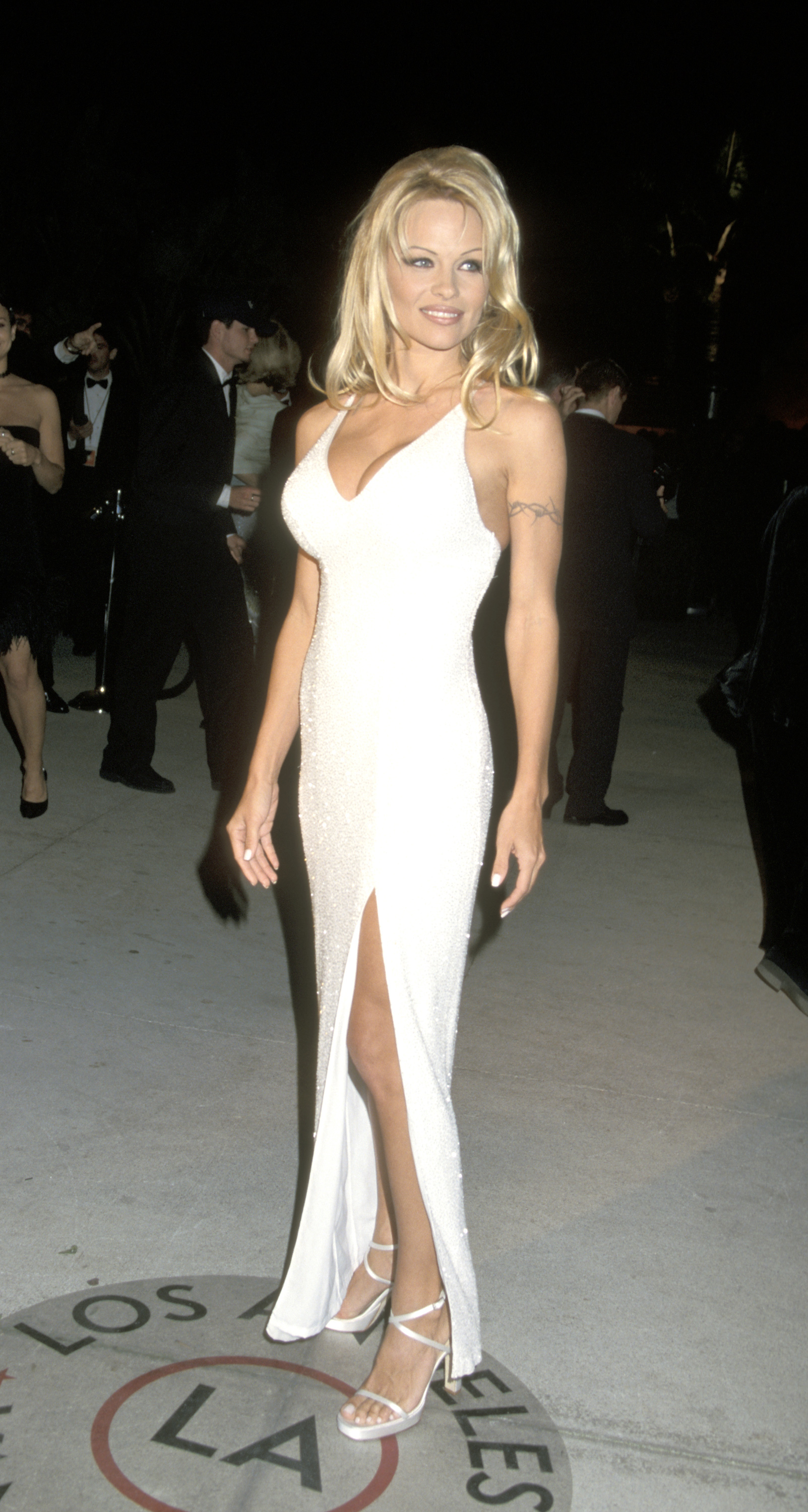
In the years after Baywatch and her ubiquitous presence in Playboy—with 14 appearances, she’s still the most featured woman in the magazine’s history—Anderson’s style began to shift. Sure, there were still figure-skimming silhouettes, but a slow evolution was underway.
The outfits, once defined by maximalism and quite literal exaggeration (all those gargantuan hats), slowly began to evolve into something more refined. There were Hervé Léger bandage dresses, but also a more muted palette and Old Hollywood echoes, reflected in liquid satin silhouettes and floor-pooling gowns.
This period, often overlooked, marks a transition from Pamela as character to Pamela as woman more in control of her image, even if the tabloids were still stuck on recycled caricatures.
Celebrity news, beauty, fashion advice, and fascinating features, delivered straight to your inbox!
Pamela Anderson in the 2000s

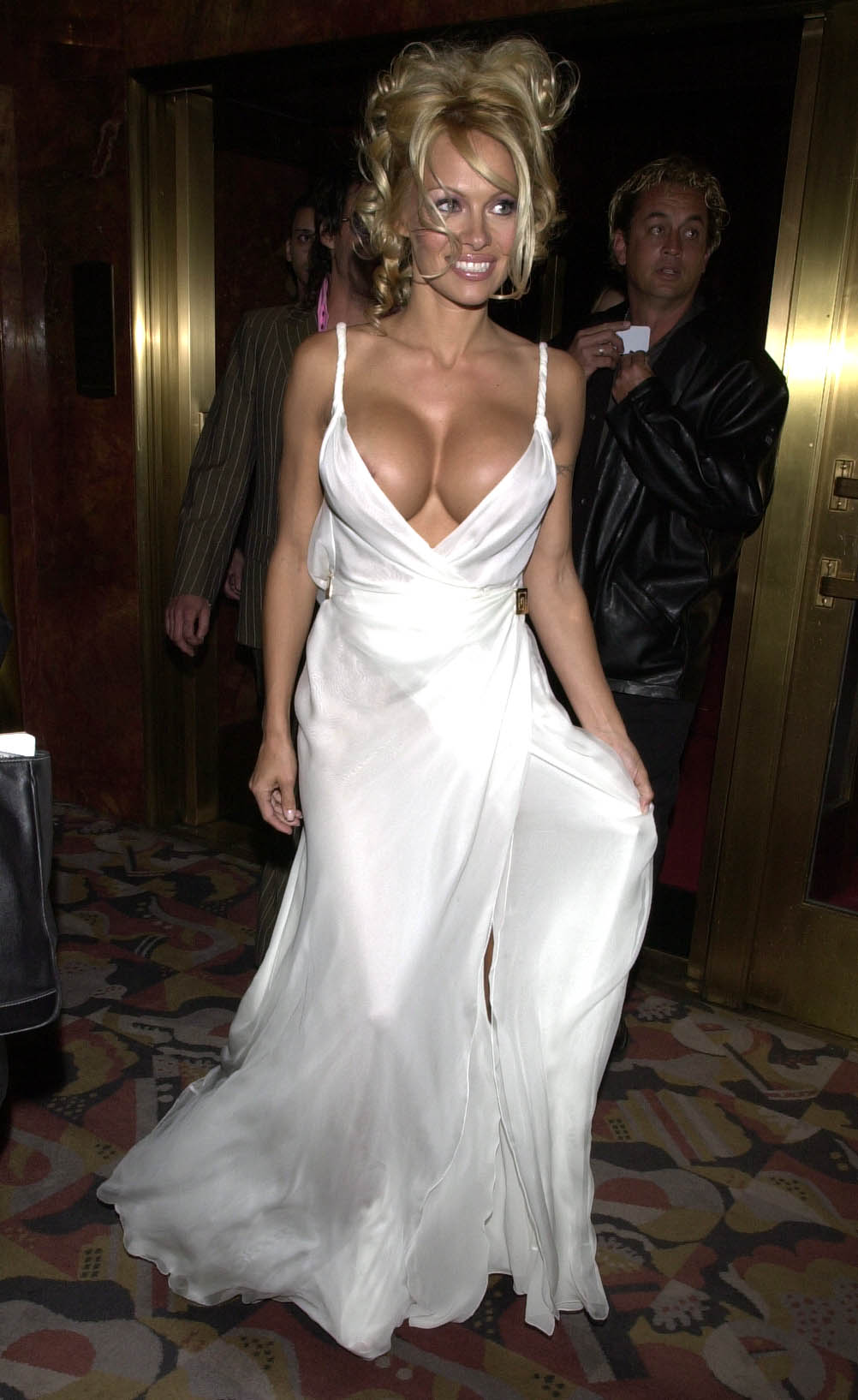

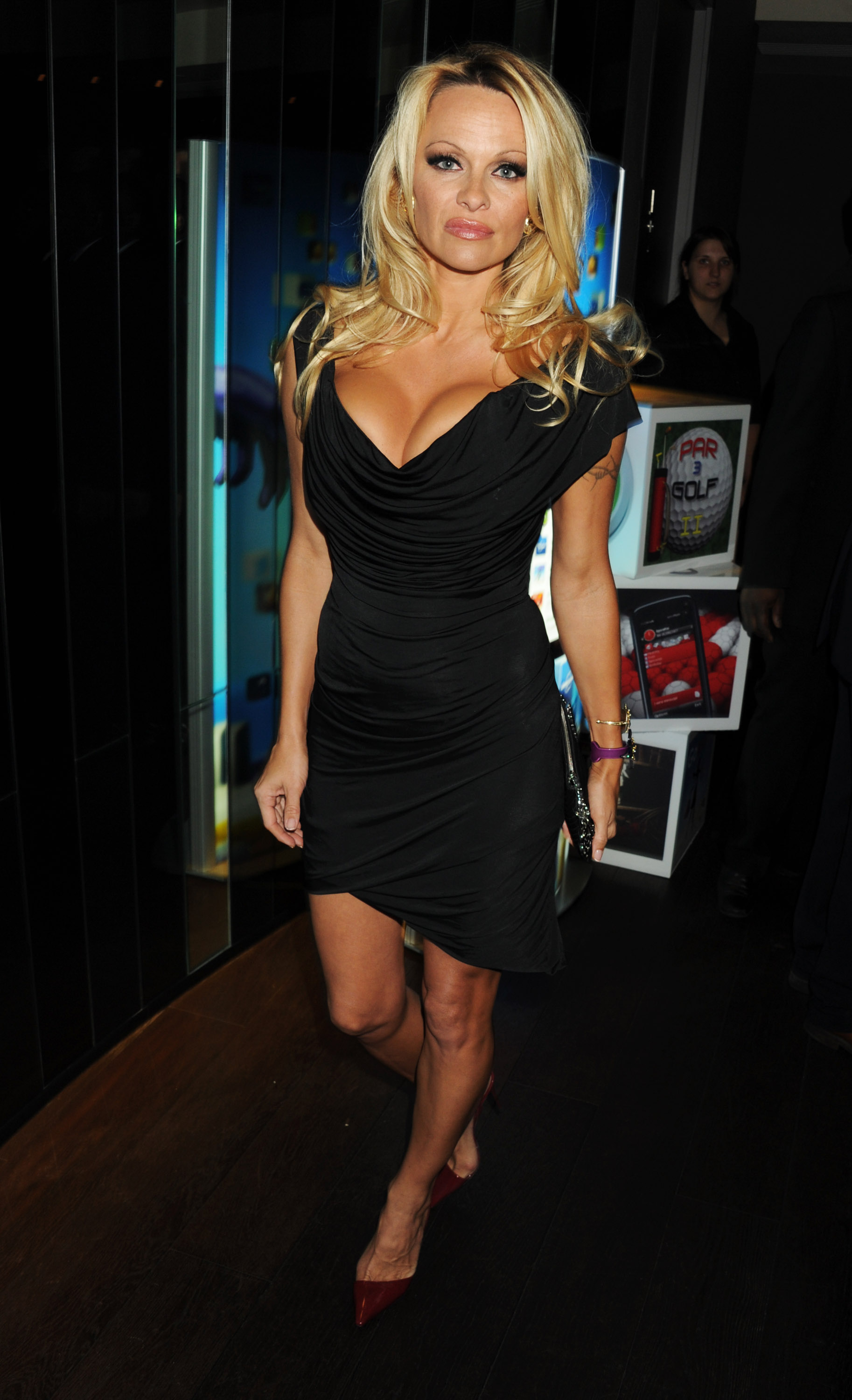
But it’s her latest transformation that feels the most significant. In the 2020s, a woman forgoing makeup should not be noteworthy and yet, countless column inches have been dedicated to Anderson’s decision to embrace a bare face. It marked a significant moment in her public evolution after decades of being known for her ultra-glam, heavily made-up look, but other women in the spotlight have faced the same scrutiny and intense speculation for the benign decision of skipping makeup. Just look at Alicia Keys, who always had a ‘barely-there’ approach to make-up anyway.
In a 2023 interview, and in her own documentary Pamela, A Love Story, she explained how liberating it felt to step away from the societal pressures of maintaining a polished, glam appearance. It was a personal choice, but also a statement about ageing, authenticity, and rejecting the standards often imposed on women in the public eye. In an era of filtered beauty and algorithmic approval, Anderson going makeup-free felt exactly that—barefaced. Like her heavily made-up lids and glossy pout before it, this, too, became a fashion moment, not because it adhered to trends, but because it bucked them.
Pamela Anderson in the 2020s
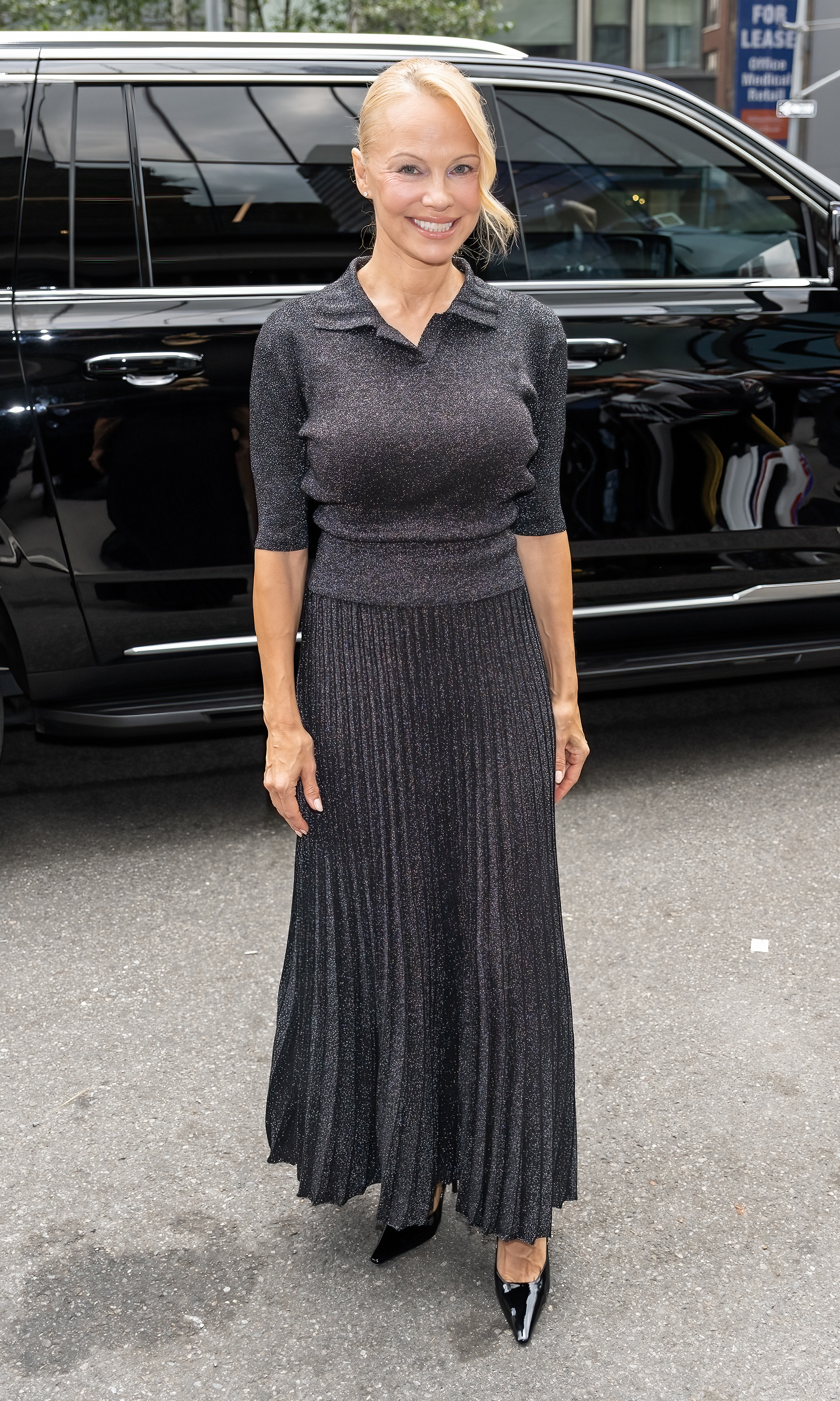
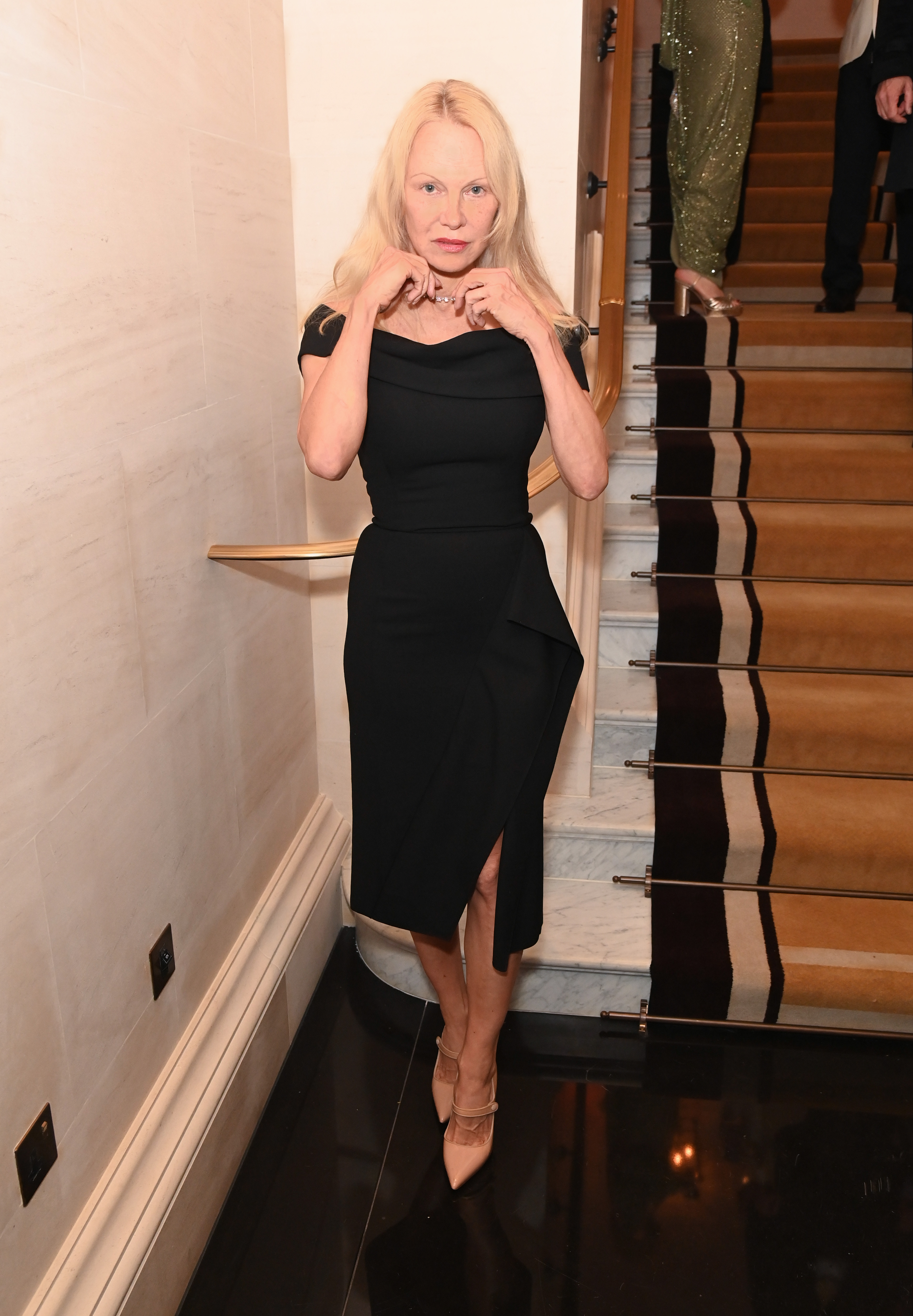

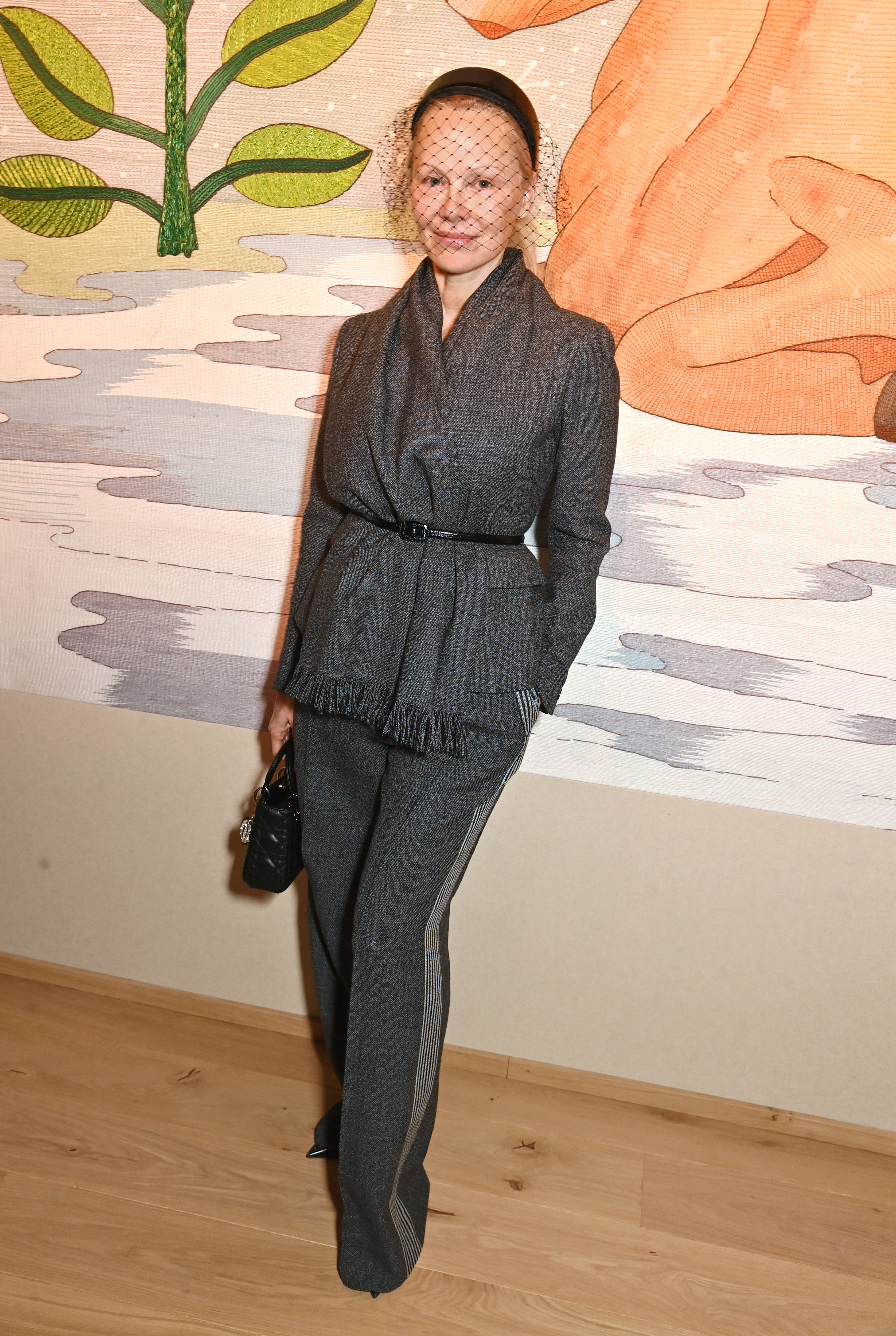
With her makeup-free look came a new sartorial code. Wearing designers like Victoria Beckham, The Row, and Vivienne Westwood—the latter for which Anderson has long been a fan and creative collaborator—her wardrobe now leans more towards quiet luxury than lavish sex appeal. Gone are the spray-painted leather pants and plunging necklines. In their place: oversized blazers, cashmere sweaters, and streamlined silhouettes.
In a culture that often sidelines women over 40, Anderson has refused invisibility—not by clinging to youth, but by embracing her natural self.
Now, on the press tour for Naked Gun, alongside co-star and confirmed beau Liam Neeson, Anderson’s style revolves around impeccable tailoring, classic cuts, floor-length gowns, sleek trousers, and chic blazers. Her look channels the restrained glamour of Old Hollywood stars, with long, lean lines and structured pieces that flatter her frame, but without the excessive adornment.
The bubblegum pinks and glitz are gone too, replaced by a quietly decadent palette of ivory, champagne, nude, and black.
Anderson's style evolution mirrors a broader shift in how we talk about—and look at—women in the public eye. From being shaped by others’ desires to defining herself on her own terms, her style has solidified into a narrative of quiet strength and refined beauty. That’s something worth celebrating.
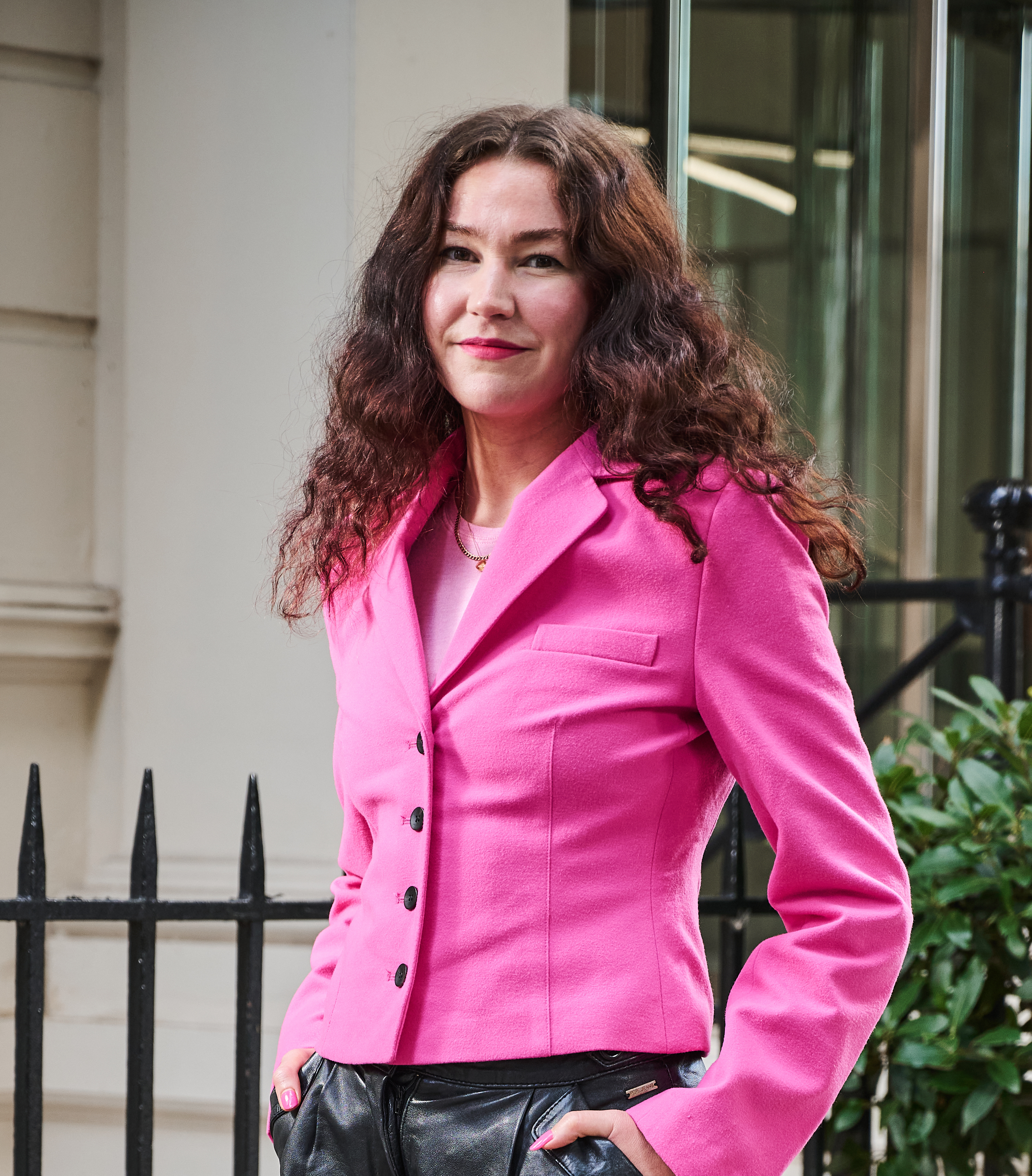
Mischa Anouk Smith is the News and Features Editor of Marie Claire UK.
From personal essays to purpose-driven stories, reported studies, and interviews with celebrities like Rosie Huntington-Whiteley and designers including Dries Van Noten, Mischa has been featured in publications such as Refinery29, Stylist and Dazed. Her work explores what it means to be a woman today and sits at the intersection of culture and style. In the spirit of eclecticism, she has also written about NFTs, mental health and the rise of AI bands.
